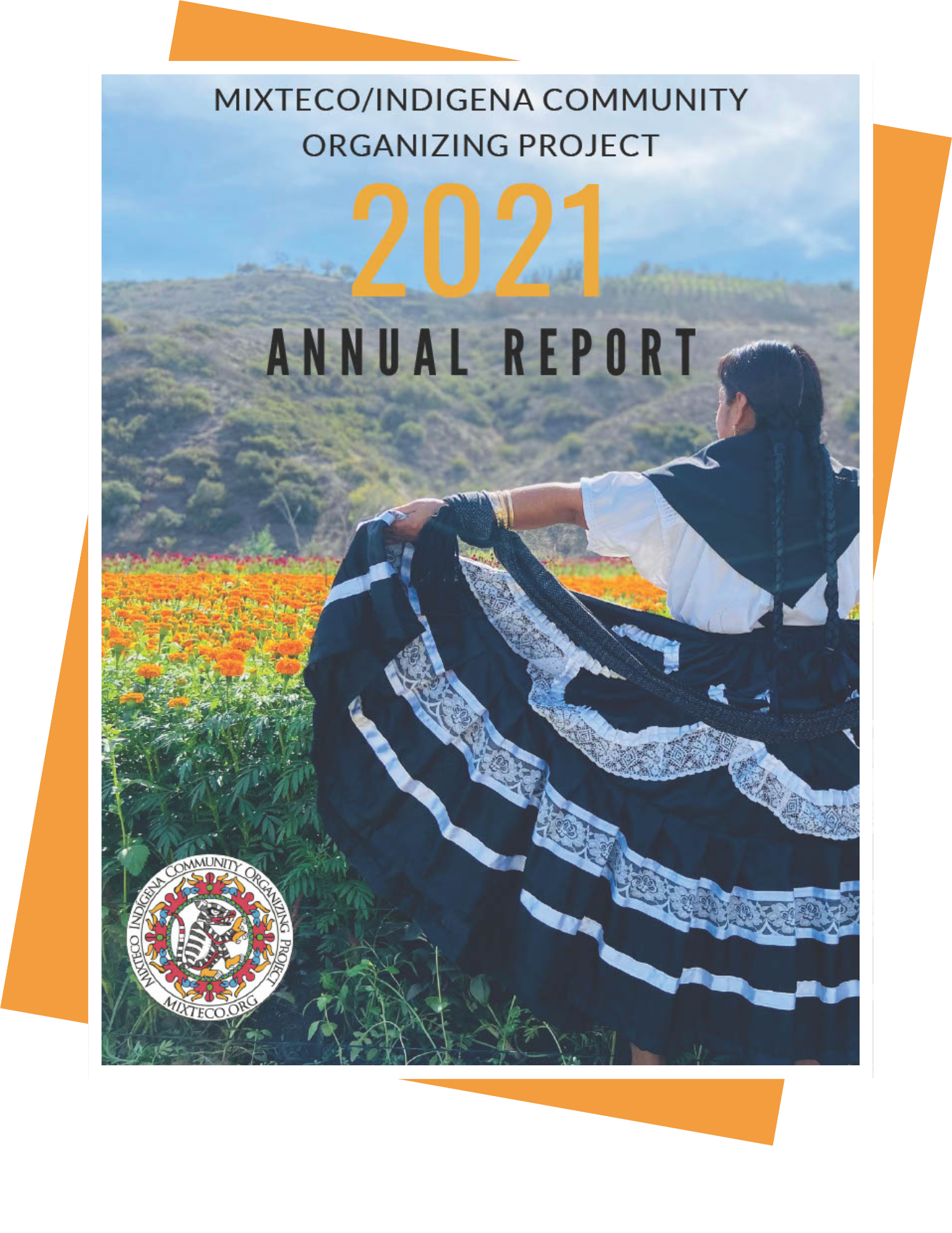Linguistic Isolation: The inability to speak English can limit a person’s ability to participate civically in their communities as well as access information and services.
Each indicator page features a series of charts, insights and analysis, case studies, resources, and related indicators.
Insights and Analyses
-
In 2019, 25% of immigrant households in California were linguistically isolated.
-
While many immigrant-headed households are linguistically isolated, a larger proportion of households headed by undocumented individuals experience linguistic isolation. Across the state, in 2019, 38% of households headed by someone who was undocumented were linguistically isolated, compared to 27% of households headed by a lawful resident, and 21% of households headed by a naturalized citizen.
-
Targeted efforts for California’s diverse communities are also critical, as Latino and Asian American households experience linguistic isolation in higher proportions. In 2019, nearly 28% of Latino immigrant households and 27% of Asian American immigrant households were linguistically isolated.
-
A regional analysis reveals that in 2019, the rates of linguistic isolation among households headed by immigrants were highest in the Central Valley (nearly 33%), Monterey-San Benito (32%), Los Angeles (nearly 29%), and San Francisco-Marin (28%). Still, the rates of linguistic isolation are notable in other regions. For example, the rates of linguistic isolation among households headed by immigrants in Sacramento (24%), the Central Coast (nearly 24%), the Far North (23%), and the Inland Empire (22%) are considerable.
-
Although immigrants experience linguistic isolation throughout the state, it is important to note the differences by region and race/ethnicity. For example, in 2019, rates of linguistic isolation were highest for households headed by Asian American immigrants in San Francisco-Marin (nearly 37%); households headed by Black immigrants in the San Diego-Imperial region (23%); households headed by Latino immigrants in the Central Valley and Monterey-San Benito regions (nearly 37%); households headed by Pacific Islander immigrants in the Central Coast and Monterey-San Benito regions (13%); households headed by Other/mixed-race in Monterey-San Benito (32%); and households headed by White immigrants in Los Angeles County (nearly 24%).
-
In 2019, throughout the state, most immigrants were bilingual and nearly 70% reported speaking English proficiently. Among recent arrivals, or immigrants arriving in the U.S. at most five years ago, 66% reported speaking English proficiently.
-
Across the state, about 45% of the population spoke a language other than English at home, as of 2019. Findings from a 2018 survey conducted by the by Ipsos Public Affairs for the American Council on the Teaching of Foreign Languages (ACTFL) shows that multilingualism is an important asset and resource for the United States, pointing to benefits like meeting the demand for multilingual workers.
-
Given the diversity of Latinx indigenous languages in Los Angeles, Comunidades Indigenas en Liderazgo (CIELO) collected data and developed a story map, highlighting the many indigenous languages spoken throughout the LA region, in an effort to underscore the importance of language justice. Their data sample reveals that more than half of respondents listed their preference for a language other than or in addition to Spanish or English. Respondents indicated more than 17 distinct languages under language groups such as Zapoteco, Chinanteco, K’iche’, and Ayuujk.
-
In 2015, San Francisco codified a Language Access Ordinance (LAO) into law, instructing all public-serving departments of the City and County of San Francisco to provide services in languages other than English when there is a sizable share of Limited-English proficient (LEP) residents. An assessment by the Language Access Network of San Francisco highlighted areas where the LAO is falling short of providing equitable and quality services to LEP residents. Among other findings, the report highlights that there is insufficient enforcement and monitoring to ensure compliance, as well as insufficient services for those who are most linguistically marginalized. The recommendations provided in the report include strengthening compliance and accountability measures and including a human-centered design approach to include community voices.
Comunidades Indígenas en Liderazgo (CIELO) is an Indigenous woman-led organization collecting data on Indigenous migrants to visibilize their existence and diversity throughout the Los Angeles region.
Founded in 2016, CIELO provides language revitalization, economic solidarity, and COVID-19 vaccine outreach to Indigenous migrant communities. Indigenous migrants face unique social, economic, and cultural challenges, yet they are often invisibilized in the immigrant rights narrative because they are typically excluded from data collection efforts or lumped into the broad Latino category. At the onset of the COVID-19 pandemic, CIELO started the Undocumented Indigenous Fund, a fund to support undocumented indigenous migrants in Los Angeles. As of January 2021, CIELO has distributed $2.2 million in pandemic relief funds. Additionally, through this fund, CIELO collected a data sample, capturing the existence and diversity of Indigenous migrants in the Los Angeles region through a story map titled, “We Are Here: Indigenous Diaspora in Los Angeles.” This data sample revealed that nearly 11,000 individuals come from 30 distinct Indigenous communities throughout Mexico and Central America. Over half of respondents indicated that their preferred language was a language other than, or in addition to, English or Spanish. This included over 20 different languages from five different language groups, such as Zapoteco, Chinanteco, K’iche’, and Ayuujk. The story map emphasizes the need for public institutions like the L.A. Unified School District, Children’s Hospital Los Angeles, L.A. County Department of Health Services, and the Los Angeles Superior Court, to take the necessary steps to provide translation services in the most commonly spoken Indigenous languages. One example of a resource CIELO has developed is the “Indigenous Language Identification Card” aimed at ensuring that entities like LAPD can connect individuals with adequate interpretation services. The data collected by CIELO illustrates the dire need to provide interpretation and translation services to reduce barriers that often impede Indigenous migrants from accessing basic, yet vital resources. As highlighted by CIELO, engaging in language justice for the region’s Indigenous migrants is critical in creating a more welcoming environment for the most marginalized communities. Beyond the L.A. region, there is a dire need for adequate translation services for Indigenous migrants arriving at the border and those navigating immigration court proceedings. To learn more about CIELO visit their site here and access their story map here. Read about CIELO’s work in the L.A. Times here. To learn more about the linguistic barriers indigenous migrants face at the border read an article by The New Yorker here.

The Mixteco/Indígena Community Organizing Project (MICOP) is a key grassroots organization working to support, organize, and empower Indigenous migrant communities in California’s Central Coast region – including Indigenous migrant youth.
Organizations like MICOP and their partners estimate that there are about 20,000 Indigenous Mixteco migrants from Mexico living in Ventura County in the Central Coast. Many such Indigenous migrants in California have been misrecognized as Latinx and assumed to be Spanish speakers at school and at work, when in reality many are not proficient in either English or Spanish. This has contributed to a widespread lack of access to educational, working, and health infrastructures, even in areas with more concentrated Indigenous migrant populations.
Work by scholars sheds light on the challenges and discrimination that Indigenous youth, in particular, face – especially in the school system. In this context, it is not uncommon for Indigenous migrant youth to be tracked into special education classes, even when they do not have a learning disability, hindering their academic progression and participation in the U.S. school system. Further, effective communication between parents and schools can often depend on whether translation is available, so parents’ ability to advocate on behalf of their children is often limited by a lack of translation services (or dependent on another family member being available to translate). As highlighted by a 2020 CalMatters article, educational barriers for Indigenous migrant youth were compounded when schools transitioned to remote learning during the height of the COVID-19 pandemic. On top of the existing linguistic barriers, Indigenous youth had to now further contend with the digital divide to access class materials and with economic imperatives to work in the agricultural fields when family members experienced job loss or contracted COVID-19. Some of the youth featured in that article were members of MICOP’s Tequio Youth Group, which focuses on leadership development to promote Indigenous pride, promotes educational attainment, and advocates against bullying. For example, in 2012, members advocated for the implementation of a policy prohibiting the use of derogatory terms used against Indigenous students in local school districts. In 2014 and 2015, youth also partook in the “Fields to College” campaign, advocating for language resources for both students and their parents in the Oxnard Union High School District. In addition, the group established the Tequio Scholarship Fund to provide funding to Indigenous college students in Ventura and Santa Barbara Counties.
In general, it is important to note that shared languages and cultures are critical components of MICOP’s success in building trust with community members – and as of 2021, 80% of MICOP’s staff are from the Indigenous communities the organization intends to serve. To learn more about MICOP visit their site here. Read more about MICOP’s other efforts during the pandemic here.
Photo credit: MICOP

Resources
- Organizations:
- Reports:
- In Search of Equity for English Learners: A Review of the 2021-2024 Local Control and Accountability Plans (LCAPs)
- Growing Language Skills with Immigrant and Refugee Families: Spreading and Adapting 2Gen Working Practices
- Speaking from Experience: How the Language Access Ordinance Can Better Respond to the Needs of Limited-English Proficient Speakers Accessing Public Services in San Francisco
- There Is A Target On Us: The Impact of Anti-Black Racism on African Migrants at Mexico’s Southern Border
- Black Lives at the Border
- Articles:
- As California Expands Safety Net Eligibility for Immigrants, Community Organizations Are Playing a Pivotal Role
- MICOP Provides Invaluable Support to Thousands of Indigenous Residents: COVID-19 Outreach is Vital for Those Who Don’t Speak English or Spanish
- COVID-19 misinformation plagues California’s Indigenous speakers
- Zapotec in 90006, K’iche’ in 90057: New map highlights L.A.’s Indigenous communities
- Community Groups Serve as Pandemic Information Lifeline to Non-English Speakers
- Here's Why California's Immigrant Communities Need Coronavirus Information in Their Own Language
- Data:


